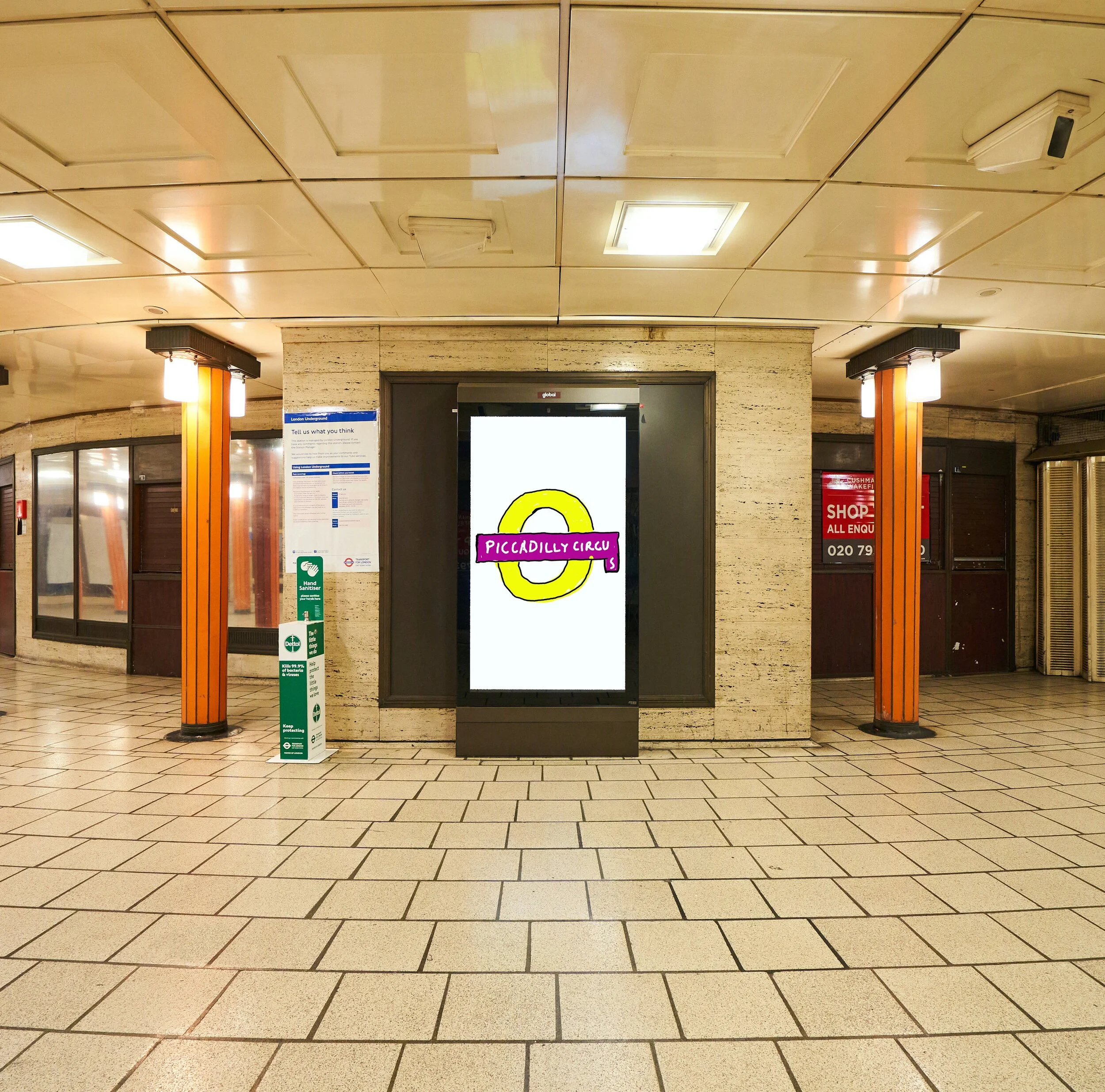Hockney and the new philistines | Lola Salem
Whilst people laboriously try to get on with their lives as Covid restrictions lift in at an awkward rhythm, some have decided that it wasn’t enough suffering. On Wednesday 12 May, the freshly re-elected Mayor of London Sadiq Khan announced a new tourism campaign, totalling the tidy sum of £7 million, which encompasses the most bizarre item of all: a design of the London Underground station Piccadilly Circus. The creator of this scribble, unrecognisable from a Paint beginner’s first try-out, is no less than David Hockney, an artist who has not produced anything substantial, if he ever did, since the 1960s.
How come the sound tradition of playing with the aesthetic of the underground design is being sacrificed on the altar of mediocrity? It isn’t clear what the intentions of the Mayor of London are. Given the immediate reactions on social media, and on Twitter in particular, the campaign doesn’t appear to be gaining any positive traction on the domestic level- and probably none at all on the international one, thus defeating the purpose of the whole thing.
Interestingly, Khan was careful to keep this ace up his sleeve while manoeuvring for getting re-elected, which happened just a few days before the unveiling of this ‘brilliant work’ [sic], ‘the first of a series of major art projects’. One wonders why such brilliancy, if so impeccably remarkable, couldn’t be thrown before in the political arena. Perhaps, Mr Khan was concerned that the work would dazzle the London audience a bit too much- and, indeed, it almost feels like a shame that Hockney’s rubbish wouldn’t cause blindness.
Yet, it wasn’t enough that a politician would deface the City. Another peculiar character entered the chat: the type of self-acclaimed defender of art who clutches their pearls at the wave of mockery that immediately spread online. Such critics, instead of recognising the work for what it truly, self-evidently is- a proof that some postmodern artists have fallen out of love with their audiences, and have no intention to speak to anyone else than themselves- have invented for some kind of noble crusade. Popular taste is misguided, we are told. David Hockney’s Piccadilly Circus design is actually ‘a great piece of public art’. You ninnies, you’ve got it all wrong. How can you not see the quirkiness of it all? How can you not appreciate the hint of humour that draws a discrete smile on the face of people passing by? Well, quite frankly, you cannot because it doesn’t exist: the quirkiness, the optimism, the playfulness, it simply isn’t there at all.
Now, Hockney’s dud raises a real debate. Not the one that pseudo-enthusiastic journalists think it is. Indeed, it isn’t really about a vague rumbling on the general place of art in society, a coy question that points at nothing in particular. Additionally, there are better artists and better pieces of art to do this job. The real question lies not in the place and value of this postmodern art but in the role and function of its critics that have dropped all effort for engaging seriously and honestly with it. Why would they defend the indefensible? It seems easier for some to find immediate sympathy when some crowds topple statues or smash windows, but impossible for them to conceive that elements of common sense lie in the online flow of mockery that merely turns into ridicule what is already ridiculous.
After all, if art is supposed to spark debate, shouldn’t it also acknowledge the result of such debate? It would be rather uncharitable to compare the reactions of today’s audience to past gatekeepers of taste who sometimes censored genuine talent- say, those who composed the Salon des Refusés in 1862-1863, like Manet. There is a clear element of truth in today’s mockery, and the fact that some holders of cultural capital can’t see it is the fundamental issue, here.
The public sphere is always a dialogue between people who hold (some) power, and others- both ends of the stick slightly shifting depending on the issue and context. But cultural elitism seems to have lost its sense of solidarity. Articles defending the piece of ‘art’ by David Hockney are a bit more dangerous than mere lazy gestures. That is because the scale of this ‘art’ is actually much wider than people think it is. It does something- quite a pernicious thing, really- as it quietly attempts to remodel the human mind in accordance with the nihilistic precepts that it discloses. It spreads a disease that is not likely to be contained by any vaccine, as long as cultural elites continue to publish excuses for artists such as Hockney, who don’t bother to engage in a fair-minded discussion with their own audiences.
The defence of such project- beyond the relevant issue of the use made of taxpayers’ money- is unacceptable. It demonstrates that those who have the responsibility to carry meaningful debates in the public square have given up on the most basic of their duties. A fair criticism of Hockney’s design should revolve, among other examples, around the disappearance of ornament and ornamentation from art, the dilution of symbols as religion retreats and doesn’t offer the canvas through which sacred is diffused, the vacuous dimension of postmodern conceptual art that became completely literary as it needs marketing discourse to sustain itself.
The new philistines have found ways to persuade themselves that should worry every one of us. The Beautiful directly connects with the Just and the Good. If something like Piccadilly Circus’s new design cannot even raise an eyebrow, how can we place any form of trust in such people when it comes to trickier questions of justice and fairness?
If you liked this article and want to help our organisation expand, please consider donating.

